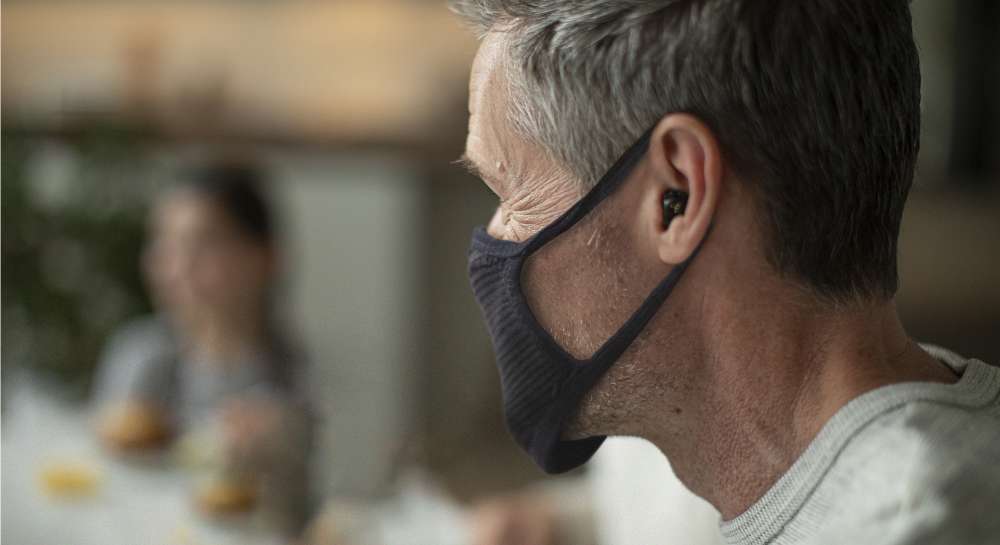
Over the past 2 years COVID has been the catalyst for some changes to how we go about our days and how we communicate. Masks, while recognised internationally to reduce the spread of COVID, can be challenging for people with hearing loss and hearing aids. Social distancing is another widely implemented strategy to reduce the spread of COVID, this too can bring challenges to communication.
We all use people’s facial expressions and lip read to some extent when communicating with each other, people with hearing loss rely on this to a greater extent. As masks cover our mouths these cues are lost leaving people more reliant on what they hear alone. We also know that the further away from someone we are the softer their voice is when it reaches our ears. As we practise social distancing, to keep ourselves and others safe, our normal speaking voices can be too soft for people with hearing loss to hear. Masks also reduce the volume and muffle the wearer’s speech.
A laboratory study1 has shown that the combination of social distancing by 6 feet combined with a N95 mask can reduce speech volume by 15 dB. These findings have been backed up by real world data with an Italian study that surveyed people with hearing loss finding that main concern reported about face masks was the sound attenuation for 44.1% of the subjects and the impossibility of lip reading for 55.9%.
So what can we do?
Hearing aids have been shown1 to help by amplifying or making the speech louder, enabling those with hearing loss to overcome the barriers masks and social distancing create. Some manufactures have even developed a setting that will provide additional amplification to the frequencies that are most impacted by the muffling effect of masks.
By boosting speech audibility, hearing aids can make it easier to hear people wearing face masks. And our customised hearing aids won’t tangle with or get pulled off when you wear a mask.
One common issue that those with hearing aids have reported with masks is that the mask ear loops can get caught up in their hearing aids that sit on their ears. Often this style of hearing aid has been selected as some manufactures don’t have a solution that sits in the ear that is rechargeable and will connect to Bluetooth devices such as your cell phone. The great news is that there is an In The Ear (ITE) solution that is fully rechargeable and Bluetooth capable which means that you don’t have to compromise on any features.

If you are interested in finding out more about this exciting and innovative hearing solution I invite you to come and have a chat with me.
References:
Edge Mode: Unmasking Benefits for Hearing Aid Users in Difficult Listening Environments, Dave Fabry, Ph.D.,
Thomas Burns, Ph.D; 2022, (cited 22 Feb 2022). Available from Starkey Edge Mode – Unmasking benefits for Hearing Aid Users White Paper.pdf (mediavalet.com)
COVID19 and Hearing Difficulties, Eleonora M.C. Trecca, Matteo Gelardi, and Michele Cassano, Am J Otolaryngol. 2020 July-August; 41(4): 102496.
Published online 2020 Apr 19. doi: 10.1016/j.amjoto.2020.102496
Evolv AI Ultimate Solution for Face Masks.pdf (mediavalet.com)
